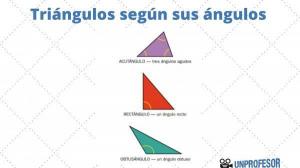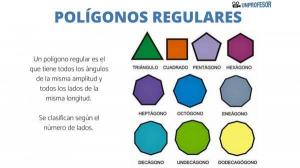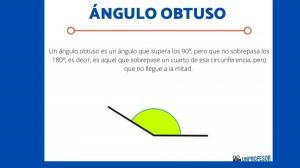What are REGULAR POLYEDERS and what are they

We are pleased to bring a new lesson from a Professor for the study of geometry, specifically of the regular polyhedra. Following the methodology of the other lessons, we are going to see the theory and examples a bit and, finally, we will provide you with an exercise so that you can put the explained to the test. In addition, we will leave you the solutions so that you can check that you have done it well. If you want to know what are regular polyhedra and what are they, keep reading!
Index
- What are polyhedra
- Characteristics of regular polyhedra
- What are regular polyhedra? Examples
- Regular polyhedra exercise
- Solution
What are polyhedra.
Polyhedra are geometric bodies with plane faces that encompass a certain finite volume. Furthermore, they are bounded three-dimensional bodies, that is, limited by certain flat surfaces, but always a finite number of them. Those flat surfaces are polygons.
They can be of various types, but in this article we are going to deal only with the regular polyhedra, which are those that:
- Are from regular faces (all its faces are regular polygons)
- Are from uniform faces (all their faces are the same)
- Are from uniform edges (the two faces that meet on each edge are the same)
- Are from uniform vertices (all faces that meet at a vertex are equal and are always in the same order).
In conclusion, for a polyhedron to be considered regular, it must have regular faces and uniform faces, edges and vertices. All these conditions must be met at the same time.
Characteristics of regular polyhedra.
The characteristics of regular polyhedra are as follows:
- All of its faces are regular polygons.
- All their faces are the same.
- All its angles are equal.
Now you can check that these characteristics are fulfilled in the regular polyhedra that you will see in the next section.

What are regular polyhedra? Examples
In order to see the examples of regular polyhedra, we first have to talk about what they are known as Platonic solids, which are regular and convex polyhedra (This means that if you join two points at random of the polyhedron, you will always have a segment left by the inside the polyhedron, never outside, as would happen for example in a polyhedron with the shape of a donut). These are five exclusively:
- The tetrahedron, which is a polyhedron with four faces, six edges and four vertices, whose faces are equilateral triangles and three faces are joined at each vertex.
- The cube or hexahedron, which has six equal faces formed by squares, that is, the regular polygon that has four sides of the same length and with 90º angles at its corners. At the same time, these polygons meet at vertices with angles of 90º, so it is a regular polyhedron.
- The octahedron, which has eight faces, twelve edges and six vertices, whose faces are equilateral triangles, as in the tetrahedron.
- The dodecahedron, which is made up of 12 faces that are regular pentagons.
- The icosahedron, which is made up of 20 faces that are equilateral triangles.
As a curiosity, it is worth mentioning that the Greeks related each of these polyhedra with some element (earth, water, air and fire, and the dodecahedron, divinity).

Regular polyhedra exercise.
So that you can put into practice what was explained in today's lesson, we encourage you to do the following exercises:
- 1. Mention the conditions necessary for a polyhedron to be considered regular. Should all of them be met at the same time or is one of them already considered regular?
- 2. What are the characteristics of regular polyhedra?
- 3. What regular polyhedra have their faces in the shape of an equilateral triangle?
Solution.
Let's check if you have done the exercises correctly:
- 1. The necessary conditions for a polyhedron to be considered regular are: that it be of regular faces, that it be of uniform faces, that it be of uniform edges and that it be of uniform vertices. They must all be fulfilled at the same time.
- 2. The characteristics of regular polyhedra are that all of their faces are regular polygons, that all of their faces are equal, and that all of their angles are equal.
- 3. The tetrahedron, octahedron, and icosahedron have their faces in the shape of an equilateral triangle.
If you want to learn more about polyhedra, feel free to browse the tabs of a Teacher's website, especially the search engine at the top. Also, if it has helped you, you can share this lesson with your classmates!
If you want to read more articles similar to What are regular polyhedra and what are they, we recommend that you enter our category of Geometry.



